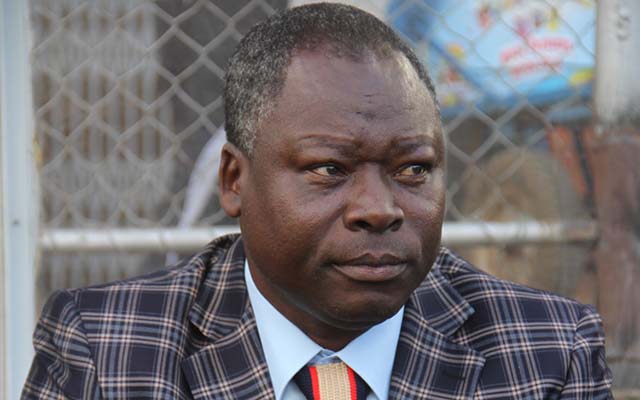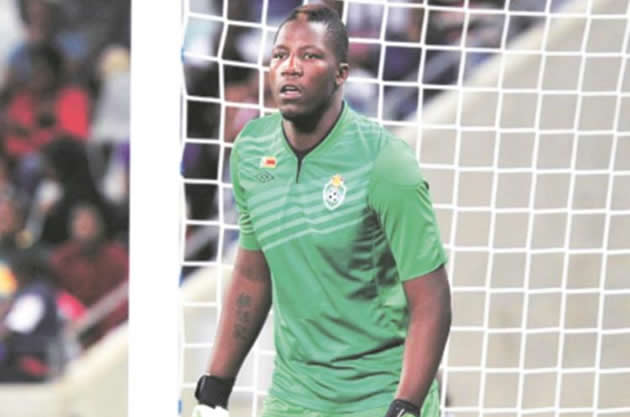Remembering Abel Sinametsi Sithole, a brother and fighter


The late Abel Sinametsi Sithole
David Mungoshi Shelling the Nuts
In life there are people who are unforgettable. This is because they leave us with these lovely memories and lots of nostalgia. I thought about this when I heard of the death of Abel Sinametsi Sithole of Cool Crooners fame, these past few days.
The picture of Lucky Thodhlana, Timothy Seilani and one or two others singing “Bhulugwe Lami” at the graveside reminded me of a similar incident some years ago after the death of Ernest Jacko the iconic Dr Footswitch bassist.
Manu Kambani, a man who could “play his guitar like ringing a bell” as Chuck Berry would have said, and the surviving members of Dr Footswitch, including their golden-voiced lead vocalist Stanley Chiurawa stood before Jacko’s open grave as the casket went deeper and deeper into its place of rest.
They did a refrain from the band’s masterly hard rock classic “Keep on Trying” done as Jimi Hendrix would have done it:
“Hey, hey, hey, it’s alright,” they sang one last time as if to assure their dead comrade that it was alright to pass on, that there was no tragedy in succumbing to life’s dictates. We are born and we die. Fact.
When it was Kambani’s turn to go to the great beyond the women of Mbare in true traditional style put on a faultless show parodying Manu’s antics on the lead guitar: playing it with their teeth and their butts and lip-syncing “Shumaira” the song that announced the arrival of Dr Footswitch after the demise of the Sounds Effect Band.
ZBC-TV captured the spectacle on video and has shown it often on TV over the years.
There is always a story to be told whenever an artiste passes on.
Let it be also with my brother “uBhudi Sna” as we affectionately called him in Blue Skies, the City of Kings, way back then.
Abel’s father was a grand old chap who was silent to the point of being almost taciturn. But of course he wasn’t. I remember him sitting quietly on the “stoep” of their part of the semi-detached unit that we shared in Mzilikazi Village.
We lived in F Square near Lobengula Government Primary School. The old man would sit there quietly smoking his beloved cigarette. Whenever he saw me watching him he would give me that quiet smile of his and say, “Hello sonny.”
He was a carpenter, who earned a bit of money making tables and things in Makokoba Township.
Abel’s mother, MaKhumalo, that loving woman, who spoke Afrikaans like a Boer lady, was a washerwoman.
She took in laundry from the white ladies and town and contributed to the family fiscus that way.
All in all, she did a great job, all things considered. We had no power in the houses except for lighting. The lights in the houses went on with the street lights outside and went off that way as well.
So whatever ironing had to be done was with the charcoal irons that required great care.
Any ash spilling out, especially on white garments could mean doing everything all over again.
The townships were alive with the arts and with boxing and football and somehow the people managed to conjure up a carnival atmosphere.
I remember a sister next door falling to the charms of a left-footed soccer player with a team called North Rhodesia. She had a daughter with this popular star. Her friend too suffered the same fate at the hands of another North Rhodesia player.
My brother Sinametsi, forever gentle, was a renowned musician and a member of the popular Golden Rhythm Crooners, a group with polished choreographies and phenomenal stage acts.
He was my brother and I was umnawakhe (his younger brother) because we were from the same neighbourhood and because in those days anyone who was older than yourself automatically was your elder brother.
The opposite was also true if the other person was younger than yourself. It had nothing to do with biology, just culture. Bulawayo has always been a cosmopolitan city with a rich ethnic and cultural mix. We really were all one family in F Square.
When the Crooners had a show coming, their glossy posters would be all over the place, advertising the show. Bhudi Sna’s picture was on the poster with his group mates: George (the clown of the group), Timothy, and Champion. Sna and Champion wore expensive wrist watches.
Sna did all the logistics and carried out his duties with humility and professionalism. Champion Banda and Timothy Seilani were highly entertaining tap dancers. Before a show I sometimes watched them go through their paces on the veranda.
It goes without saying that being a member of the Crooners meant being a celebrity. Everyone knew them and recognised them, wherever they went. These guys could have had their pick of any of the girls that swooned over them. But they didn’t! That says a lot about their discipline and the serious regard they had for their music.
Bands in those days, especially the vocal section, wore very smart attire on stage and changed from one outfit to another throughout the concert (that’s what a show or gig was called then). The music was everything from township jazz to rumba.
When the band’s rock star went on stage to strut his stuff the four guys took a rest. And we the boys from the neighbourhood would be waiting outside to see who came out.
When Sinametsi came out we called out to him. He let us in for free. This was how I first got to see the mighty Golden Rhythm Crooners in action.
The song “Itsheri zesipoti”, a song about good time girls on Saturdays, in their stiff petticoats and high heels, and how they made their way up and down the road walking like maestros. In later years Thomas Mapfumo borrowed a refrain from this song and affixed it to his “Shabhini” song. The Crooners were that good!
Sinametsi did the lead vocals, his voice blending well with the others in a rich melody and harmony that made Crooners music stand out. The group’s footwork was phenomenal, rivalled only by that of The Cool Four to which Lucky Thodhlana and Ben Pulapulani Gumbo belonged.
A popular rumba song done by many groups of the time in Bulawayo was the popular “Christina Wangu”. The version of the Cool Four was the most entertaining. Lucky and Pulapulani together with Sinametsi later came together in the iconic Cool Crooners.
The name of this new group is a throw-back to the early days of the two rival groups.
If we think back to the friendly rivalry between Alick Macheso and Tongai Moyo we get a reasonable idea of the sort of relationship there was between the Golden Rhythm Crooners who, to a large extent, modelled their music on the famous Crew cuts of Canada, a group that enjoyed huge success with “Sh Boom” and “Earth Angel” and the Cool Four who were a super group in their own right.
However, members from both bands often helped out when a member of the other group was away during a show. Neville Ndlovu (Never Nevada), the six- footer who became quite good on the piano often helped the Crooners out.
Lucky Thodhlana lived a few houses down from us. He was called Likhani in those days and is still as quick-footed on the dance floor as he was then. He too is and was my brother. This is why it was easy for him and Sinametsi to team up in later years.
As the music scene changed with Beatle music coming to the fore, the Crooners moved up north across the Zambezi where they continued to play big music. Crooners’ music stood out because of the definitive piano sound from Peter Jaffa and the double bass of Roy Shuwele.
It was while they were in Zambia that life took a different turn for the Crooners. Champion Banda was Zambian so he was home. Zacks Gwaze the gifted lead guitarist, who could play anything on his guitar became a regular at hotels in Ndola and Lusaka.
Sinametsi and George joined ZIPRA, the armed wing of the Zimbabwe African Union (ZAPU). Sinametsi crossed the Zambezi in a ZIPRA reconnaissance group and was captured, tried, sentenced to death and incarcerated at Khami Maximum prison to await his execution. Luckily, his sentence was commuted to life imprisonment.
When independence came he had served thirteen years. Once out of prison Sinametsi chose to return to music and kept plugging at it until the Cool Crooners were a brand.
Bhulugwe Lami, a bouncy, danceable tune, still stands out today, years after its recording.
It is unbelievable just how good the music was, all from the combo of guitar, piano, drums and double bass plus the inimitable vocals. Via con dios, my brother Sinametsi (Go with God).
David Mungoshi is a writer, social commentator, retired teacher and editor.









Comments